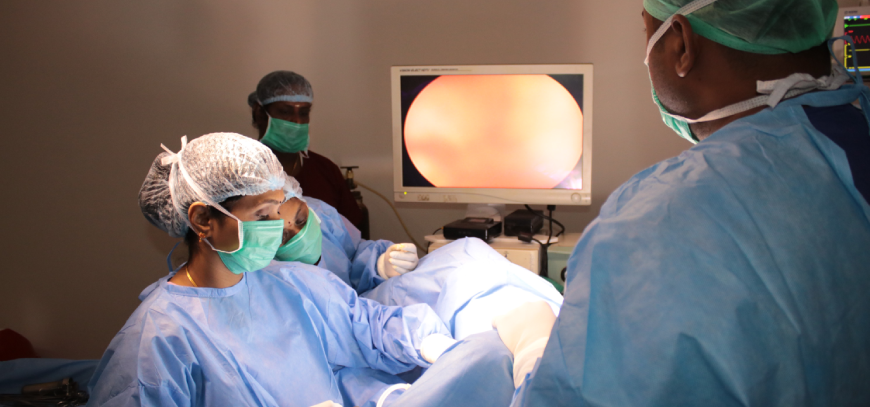Hysteroscopy

Hysteroscopy for IVF Treatment in Chennai
Hysteroscopy is a strategy that permits your primary care physician to peer inside your uterus so as to analyze and treat reasons for irregular dying. Hysteroscopy is finished utilizing a hysteroscope, a slim, lit cylinder that is embedded into the vagina to look at the cervix and within the uterus. Hysteroscopy can be either analytic or usable.
What is demonstrative hysteroscopy?
PIndicative hysteroscopy is utilized to analyze issues of the uterus. Demonstrative hysteroscopy is additionally used to affirm consequences of different tests, for example, hysterosalpingography (HSG). HSG is a X-beam color test used to check the uterus and fallopian tubes. Symptomatic hysteroscopy should regularly be possible in an office setting.
Also, hysteroscopy can be utilized with different strategies, for example, laparoscopy, or before methodology, for example, expansion and curettage (D&C). In laparoscopy, your PCP will embed an endoscope (a thin cylinder fitted with a fiber optic camera) into your stomach area to see the outside of your uterus, ovaries and fallopian tubes. The endoscope is embedded through a cut made through or beneath your navel.
What is employable hysteroscopy?
Usable hysteroscopy is utilized to address an irregular condition that has been identified during an indicative hysteroscopy. In the event that an anomalous condition was distinguished during the symptomatic hysteroscopy, a usable hysteroscopy can be performed simultaneously, dodging the requirement for a subsequent medical procedure. During employable hysteroscopy, little instruments used to address the condition are embedded through the hysteroscope.
When is employable hysteroscopy utilized?
Your primary care physician may perform hysteroscopy to address the accompanying uterine conditions:
- The patient is anesthetized using local anesthesia such as Carbocaine for short procedures, Lidocaine for medium length sessions, and Marcaine for multiple fillings. Patients with feelings of anxiety may be offered Nitrous Oxide (laughing gas) for the duration of the treatment. Only in extreme cases, the patient is given IV sedation or general anesthesia and may be referred to a more suitable dental setting such as a hospital.
- Bonds: Also known as Asherman's Syndrome, uterine attachments are groups of scar tissue that can frame in the uterus and may prompt changes in menstrual stream just as fruitlessness. Hysteroscopy can enable your PCP to find and expel the bonds.
- Septums: Hysteroscopy can help decide if you have an uterine septum, a distortion (imperfection) of the uterus that is available from birth.
- Anomalous dying: Hysteroscopy can help recognize the reason for overwhelming or long menstrual stream, just as seeping between periods or after menopause. Endometrial removal is one method in which the hysteroscope, alongside different instruments, is utilized to devastate the uterine coating so as to treat a few reasons for overwhelming dying.
When should hysteroscopy be performed?
Your primary care physician may suggest planning the hysteroscopy for the main week after your menstrual period. This planning will give the specialist the best perspective within your uterus. Hysteroscopy is likewise performed to decide the reason for unexplained draining or spotting in postmenopausal ladies.
Who is a contender for hysteroscopy?
In spite of the fact that there are numerous advantages related with hysteroscopy, it may not be proper for certain patients. A specialist who represents considerable authority in this methodology will counsel with your essential consideration doctor to decide if it is proper for you.
.png)

